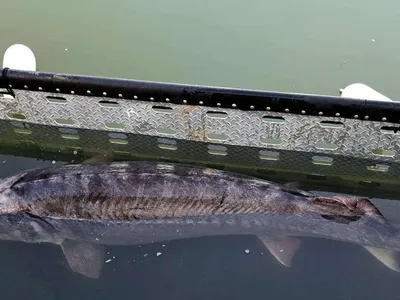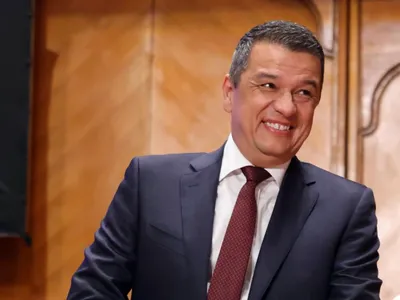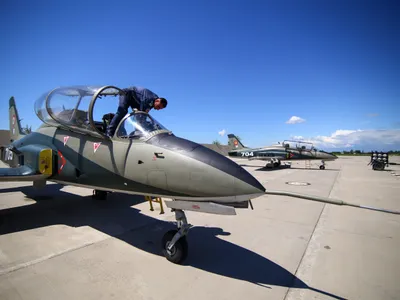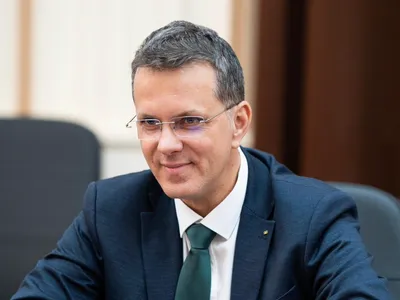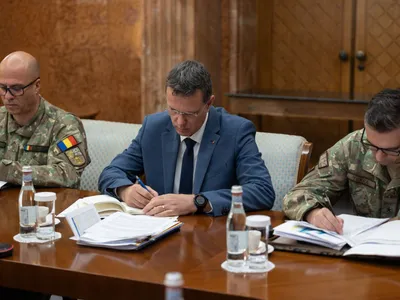The Bystre canal in the Ukrainian Danube Delta, open for seagoing vessels business. Environmental concerns, drowned by Russia
Cătălin Prisacariu, Oleg Oganov, Petru Zoltan
The Bystre Canal, open for business. Which is heavy maritime traffic, despite a pending dossier on the environmental impact on the Danube Delta. The UN committee considering environmental compliance has suspended discussions initiated by Romania on the dossier. The reason: the Russian invasion of Ukraine.
The change on Chilia
It's a cold November Saturday morning on the Romanian side of the Chilia Danube’s arm. Until the beginning of this year, only river vessels, mainly barges carrying goods between the Danube ports of Ukraine, could be seen on the waters of Chilia.
But now the northernmost arm of the Danube is swarming with seagoing vessels. Across the water from the Romanian town of Pătlăgeanca, where the Danube forms the St. George's arm, six seagoing ships are stationed. A military speedboat carrying five soldiers is speeding towards them.
From Pătlăgeanca to the Romanian town of Periprava, along Chilia, dozens of sea vessels and barges are silently floating, waiting to enter Ukraine's Danube ports. From time to time, Ukrainian military vessels approach and a few uniforms board for checks: since the Russian invasion, the Ukrainian bank of the Danube has been a militarised zone.
Security checks
To get from Periprava, the last Romanian village on the Chilia arm, to the point where the Bystre canal breaks away from the Danube, you need a local motor boat. There is also an unofficial procedure to tick before putting the boat in the water: you register, on the Romanian side, at the Romanian Border Police station to sail in Romanian waters. The reason: a precaution for a possible encounter with Ukrainian border guards on the Danube.
If this happens, in order not to risk being considered a spy, you introduce yourself and recommend them to contact their Romanian colleagues where you have just registered as a tourist in your own country's waters. It's war, no risk worth taking.
After 20 minutes of cutting through the water by motorboat, we arrive around 09.30 right at the spot where an enormous mouth opens into the Ukrainian shore. That's the point where the Bystre canal begins.
The Bystre Canal, open for business
The Tunisian-flagged cargo ship Iskander, which has just come out of the Bystre canal, passes by. Data from the Marine Traffic website, which was subsequently consulted, showed that the Iskander had left the Greek port of Vrisakia on 20 October 2023 for the Ukrainian port of Izmail, where it arrived on 4 November, the same day we saw it enter Chilia.
A few minutes later, the Liberian-flagged oil tanker Panjali Teymurov enters Chilia from the Bystre canal. The tanker left the Bîstroe canal near the Romanian side of the Chilia river, then continued towards the Ukrainian town of Vâlcov, opposite Periprava.
Periprava: 80 souls and roaming cows
80 souls, mostly Lipovans, are still residents of Periprava. They make their living from fishing, livestock farming and a little tourism. Dairy cows are allowed to graze unhindered on the pastures of the Danube Delta all year round, alongside the semi-wild horses of the Letea Forest.
When the cows return home, the locals know that winter is coming. A former border policeman, now the local priest, is serving in the old Orthodox church, painted blue with golden spires. A few steps away there's the only shop in the village. Food and non-food products are sold here at a much higher price than in town: they are brought here by boat from Tulcea, almost 100 kilometres away.
Between 12 noon and 5pm, the shop is closed, but villagers meet on the terrace in front of it. On one of the pillars of the building that houses the local shop there's a tin sign dating back to the communist regime that reads "Here they sell lucky tickets". Underneath the sign it's an iron table, painted green, with two locals sitting around it. Fishermen. What else? The two are Mihai Slatarov (43) and Dumitru Simionov (55), two of the youngest adults in the village.
More fish, fewer windows of opportunity
The two locals agree that the Ukrainians' deepening work on the Bystre canal has a good and a bad side. The good side is that more scabbard fish are coming up the Danube through the deepened canal. The bad part is that along with the fish come the sea-going vessels, which means they can't fish during the day. When the ships approach the Romanian side of the Danube, they cut the fishing nets of the locals, they say.
They can only fish at night: the ships do not sail on the Danube at that time because of the war.
"Bystre doesn't affect us at all. Since it started, there's more scabbard fish. You look on the app and you see that three ships are going up and four are coming down. They cut the nets. Last year they didn't let us fish in the evening, it affected us a lot," says Mihai Slatarov.
"We protect the fish for Ukrainians"
"This year they let us go fishing at night. We have to respect the EU regulations, we have a ban, it's forbidden to fish if the Danube drops below 50 cm. You look at the Ukrainians and see that they can fish and you sit and watch because you can't. They don't respect any rules. We protect the fish for them", Dumitru Simionov adds.
Dumitru Simionov has been a fisherman since the communist regime. "Every cargo ship that comes on the Bystre comes to our shore and cuts our nets. It takes two or three days to order and get nets from Tulcea, during which time you can't fish but you have to make your quota.
We're treated like dogs around here. The screw tightens and you're forced to leave Periprava. There used to be 27 fishing boats and now there are six, maybe seven.".
Danube's routes to The Black Sea
The Danube river is one of Europe's most important transport routes: not only does it cross ten countries, but it also connects to the Black Sea. Every year, more than 20 million tonnes of goods arrive by sea via the Danube, according to data published by the Danube Commission.
The link between the Danube and the Black Sea is made by two routes: the Danube-Black Sea canal and the Sulina canal.
The Danube-Black Sea canal was inaugurated in 1984, it is an artificial canal that took several decades to complete and is located on Romanian territory.
Not deep enough
Every year, more than ten million tonnes of international goods are transported through the canal. Another almost six million tonnes of goods transported on the canal are Romanian.
The advantage of the Danube-Black Sea canal, compared to the Sulina canal, is that it makes the link between the Danube and the Black Sea at least 300 kilometres shorter.
The disadvantage, however, is that it is only seven metres deep, which means that the maximum allowable draught for ships is only 5.5 metres. In other words, only inland waterway vessels and small seagoing vessels can sail the Danube-Black Sea canal.
Sulina, essential for Ukrainian ports
The Sulina Canal, on the other hand, is one of the three main natural arms of the Danube and crosses the Danube Delta on its way to the Black Sea. Sulina, however, was established in the second half of the 19th century as the only navigable channel of the Danube, by decision of all the states involved in the project within the European Commission of the Danube.
The advantage of the Sulina canal, compared to the Danube-Black Sea canal, is that it allows a draught of seven metres. In other words, large seagoing vessels can navigate the Sulina. This is crucial for Ukrainian ports such as Reni and Ismail, which are located on the Danube's Chilia arm, north of the Sulina canal. The Chilia arm is also the natural border between Romania and Ukraine.
In other words, Black Sea vessels bound for Ukraine can reach ports such as Reni or Ismail only by entering the Sulina canal and sailing upstream and enter the Danube, to Reni, or upstream on the Sulina to the confluence with the Chilia arm, then sailing downstream on this arm to Ismail.
Bystre, the logical (water)way
As one of the biggest problem that arose after Russia invaded Ukraine is that Odesa's ports can no longer be used, all Black Sea shipping traffic to Ukraine was taken over by the Romanian Sulina canal.
The main effect - overcrowding: dozens of ships wait for days, even weeks to reach Reni or Ismail.
So resuscitating the Bystre canal has become vital for Kyiv.
Bystre is a natural branch of the Chilia arm, one of the three main branches of the Danube.
Bystre, after breaking from the Chilia arm, flows 11 kilometres to the Black Sea.
This branch has many natural advantages: it is a fast-flowing waterway, which means that the silt does not settle massively; it is up to 200 metres wide; it is not
And, perhaps even more importantly, Bystre lies entirely on Ukrainian territory, which allows Kyiv to manage this waterway directly.
65 years later
Ship traffic on Bystre is not a new idea. According to a report by the Scientific and Research Institute of Environmental Problems of Ukraine, "Navigation along the Chilia arm and the arms of the Chilia delta in the Danube region has been one of the main traditional activities since the middle of the 19th century.
The seaports Izmail, Reni and Chilia, located on the Chilia arm, are 180, 160 and 120 years old respectively.
The Bystre arm was used for shipping until 1958, after which it was kept for military use. From 1957 to 1994, the Prorva Channel was used for the passage of
The Espoo Convention
Ten years later, however, in 2004, Ukraine resumed the project of activating the Bystre Canal as a waterway. This time, however, there was another variable in the equation, apart from the obvious logistical challenges: neighbouring Romania.
According to the UN Espoo Convention (adopted in 1991 and entered into force in 1997), any State contemplating a major project with significant adverse transboundary environmental impacts is obliged not only to assess the environmental impacts of the project activities, but also to notify and consult with potentially affected States on the project.
Although dozens of documents exchanged for almost 20 years between Romania, Ukraine and UNECE (UN Economic Commission for Europe, which monitors the compliance with the Espoo Convention in Europe) show, the Bystre case proved impossible to align with the Espoo Convention requirements.
UN regulations, nothing without Ukrainian laws
The main reason: the absence of Ukrainian domestic regulations transposing the Espoo Convention provisions into national legislation. In the absence of such legislation in force, the UNECE has pointed out on numerous occasions, the documents provided by Ukraine in the Bistroe case did not comply with the UN requirements and could not therefore be accepted.
It was only in December 2020 that UNECE noted that "Ukraine has also adopted secondary legislation to bring its domestic regulations in line with the Espoo Convention".
In the same document, however, the UNECE stated that it "expresses its deep concern that since 2008 only limited progress has been made by the Government of Ukraine in bringing the Bystre Canal project into full compliance with the Convention and that the roadmap has not been fully implemented".
Furthermore, the UNECE stated that it "reiterates that the continuation of dredging activities constitutes a further violation of the Convention".
Russia drowned the environmental concerns
In March 2022, however, the Espoo Convention Implementation Committee, meeting in Geneva, decided to stop all activity in the Bystre case.
"In view of the invasion of Ukraine by the Russian Federation, the Committee agreed to defer consideration of all compliance issues relating to Ukraine to its subsequent sessions," the meeting report said.
What is the Bystre project?
But the correspondence between Ukraine and Romania continued. The two sides have kept on arguing over environmental changes caused by works both at the mouth of the Bystre Canal into the Black Sea and on the Chilia arm (the Romanian-Ukrainian border), without reaching an agreement.
What works are we talking about? According to a non-technical report sent to the Romanian authorities by the Ukrainian authorities, "Works are being carried out in the area of the branch of the Old Stambul and Bystre arms, as well as in the sea bar of the Bystre arm. (...)
In the first phase, it is planned to reconstruct a 1,670 meters-long closure dam on the northern side of the sea access channel, to construct coastal rubbish pits and to build a flow-directing dam with bank fortifications on 11 km of navigation route.
In the second phase, reconstruction of the fairway route with an increase in depth to 7.68 m for the passage of ships with the following parameters: length 125.0 m, width 17.0 m and draught 5.0 m and the construction of a closure weir on the southern side of the sea access channel with a length of 2,970 m.
In the third phase, the fairway route is reconstructed with an increase in depth to 10.0 m to ensure the passage of ships with a draught of up to 7.2 m and the extension of the dams built in the first and second phases by 1,570 m, with access to the sea at a depth of >10.0 m).
Disposal of dredged spoil is foreseen in the coastal spoil pits on the left bank of the Chilia arm and in the existing sea spoil pit, located more than 8 km from the coastline, east of the mouth of the Bystre arm".
Ukraine points Romanian dredgings out
Which and how much of these phases has been achieved so far is unclear. Most likely, as it is obvious from satellite imagery as well as images provided by the Ukrainian side, phase one has been fully completed.
Are all these works on the Bystre, Old Stambul and Chilia dangerous for the environment?
From the point of view of the UN Espoo Convention, the verdict has been indefinitely postponed because of the war in Ukraine.
From Ukraine's point of view, there is no environmental danger.
In the most recent official document sent by Kyiv in August 2023 in response to a set of comments and observations by Romania, it is stated that "The volume of dredging activities during the period of operation of the fairway is comparable to similar activities in the Danube delta, especially if dredging activities on the Romanian side are taken into account; the cumulative effect of these activities is relatively minor due to their separation in space and time and can be further reduced by inter-agency and cross-border coordination of these activities".
Furthermore, according to the same document, "The fauna of the Danube Delta has historically adapted to the constant natural changes in its habitat, including seasonal changes in water content and hydrobiotic hydroclimatic parameters, so that the impact of the planned activities on it can be considered minimal."
The Ukrainian Delta, militarized
Also, "The planned activity will not result in additional types of anthropogenic impacts on protected area species and habitats, but the planned activity will increase the intensity of vessel traffic. At the same time, the impact of the planned activity on species and habitats in these areas can be considered as minimal", the document states.
For the Administration of the Danube Delta Biosphere Reserve of the National Academy of Sciences of Ukraine, however, a local verdict is impossible to be delivered. According to a response from this institution to our request, "Since the first days of the war, access to the areas downstream of the town of Vylkove, including the mouth of the Bystre, has been strictly forbidden not only to locals, but also to the state security service, the administration and all employees of the reserve".
The Ukrainian Danube Delta administration, however, also pointed out, despite the evidence: "At the same time, we know from reliable sources that no dredging has taken place at the mouth of the Bystre, and therefore we cannot talk about an impact, it is simply impossible.".
The Romanian political mess
So far, Romania has avoided a definitive assessment. All documents sent by Bucharest to Kyiv insist on compliance with the conditions required by the Espoo Convention and ask for a detailed environmental impact assessment.
However, an episode that went off the diplomatic rails occurred in February 2023, when Romanian Transport Minister Sorin Grindeanu publicly stated that "there are signs that Ukraine is currently dredging the Bystre canal, which could have an impact on the environment and the Danube Delta".
A flare-up by several politicians in Bucharest followed, then Grindeanu announced that measurements on Bystre and Chilia would be carried out jointly by Romanian and Ukrainian specialists. Despite the fact that the measurements have been carried out, Minister Grindeanu "forgot" to present the conclusions.
To our request to present the joint measurements, the Ministry of Transport replied that "areas were identified where investment dredging works were carried out on the Bystre canal (...), which deepened the navigable channel (width 50 meters) from 5.85 meters (...) to 7-8 meters, a situation that was noted at the time of the measurements. The work carried out allows the navigation of seagoing vessels with a draught of between 6.3 and 6.5 metres. It should be noted that no areas have been identified where dredging works have been carried out on the Chilia arm".
Moreover, "the Ministry of Transport and Infrastructure has addressed the Romanian Ministry of Foreign Affairs, requesting the view of the MFA regarding the Ukrainian side's compliance with the relevant conventions, treaties and agreements, as well as the measures to be taken", the institution's response reads.
The hot potato, however, has been passed by the Romanian Ministry of Foreign Affairs back to the Ministry of Transport, as it appears from a reply of the Ministry of Foreign Affairs to our request: "In its reply to the Ministry of Transport request, the Ministry of Foreign Affairs indicated that the competent authorities to assess the impact of the works carried out by Ukraine on the Chilia arm and on the Bystre canal in relation to the bilateral and multilateral legal framework in force, including by interpreting the results of the technical measurements carried out, are the Ministry of Transport and the Ministry of Environment.".
Further requests from us to the Ministry of Transport and the Ministry of Environment remained unanswered.
The EU turns the blind eye
For the Administration of the Danube Delta Biosphere Reserve of Romania, the impact of the works on the Bystre will be long-lasting.
"In the long term, there will be effects caused by the deepening of the Bystre canal, as various deterioration processes occur, and changes over time may be surprising and difficult to predict at this time, with possible consequences such as a more acute shortage of water in certain adjacent areas," the institution says in a statement.
In response to our request, the Romanian research institute GeoEcoMar pointed out the anthropic influence: "Opening another arm to maritime navigation (compared to the current one - Sulina - editor's note) will only produce anthropic pressures on a larger area of the delta, especially since the Sulina arm is part of the European TEN-T transport network and, under peaceful conditions, can serve the Danube ports of Romania, Moldova and Ukraine without problems.
If the special international situation due to the war can justify this temporary expansion and intensification of traffic, otherwise the issue will have to be judged after the war is over.".
According to a reply sent to our request, the European Commission indicated that it had not been asked for any consent from Ukraine for the works on the Bystre, that it had not financed this project and that the responsibility for the environmental impact assessment lies with the national authorities.
_____________________________________
This article was developed with the support of Journalismfund Europe.





